The Farmer in the Dunnellon
By Charlene Clark
Farmer Whitt has no filter. He is a “block of salt” with sprinkles of gentle yet strong-willed mannerism, respect, openness, a great sense of humor with an infectious laugh. He raises one of the most expensive cattle in the world at a farm located deep in the woods in northern Florida. The monetary cost of one full-blood calf is in the range of $3,500.00. All of his cattle are registered with the American Wagyu Association which promotes and upholds the standards for Wagyu beef, and is one of the most expensive and finest quality of beef available in the United States.
Wagyu (和牛 Wagyū, “Japanese cow”) is any of the four Japanese breeds of beef cattle carrying area names such as Matsusaka beef, Kobe beef, Yonezawa beef, Mishimabeef, Ōmi beef, and Sanda beef. Wagyu cattle are genetically predisposed to have high levels of unsaturated fats, which have higher levels of intra-muscular fat or marbling. The texture of the meat is finer with a higher percentage of omega 3 and omega 6 fatty acids not found in typical beef, resulting in a more flavorsome richness eating experience. A super beef, wagyu, is known for its marbled appearance and for being so tender it actually melts in your mouth.
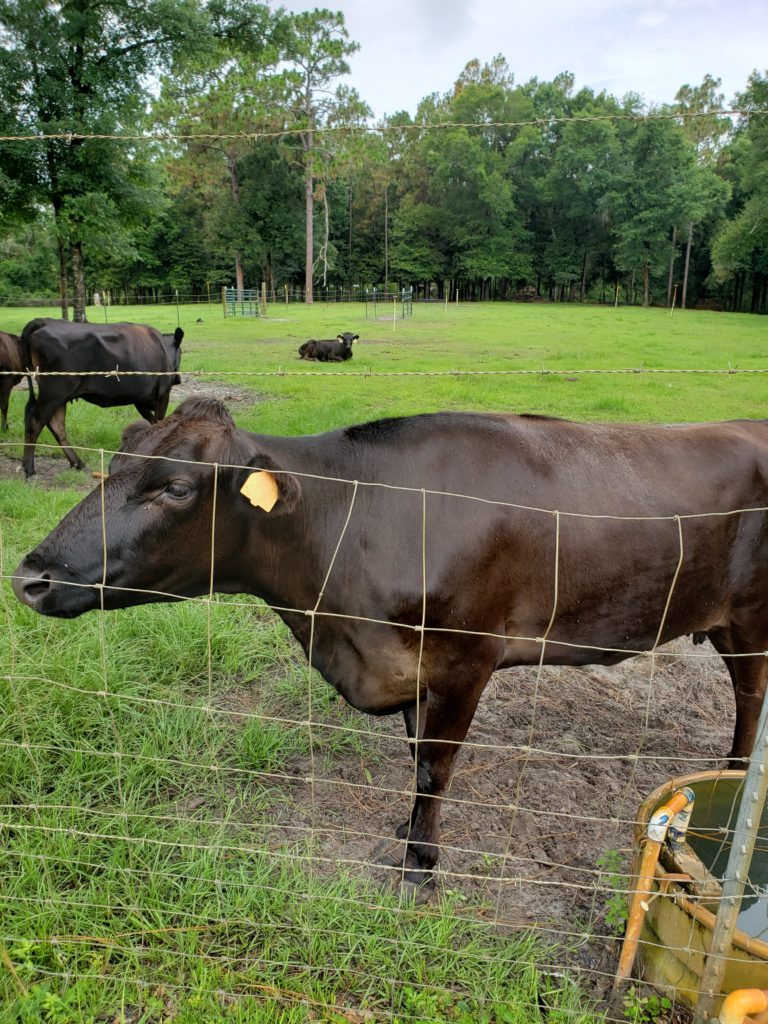
There are about 793 Wagyu farmers in the United States with 38 in the state of Florida. Farmer Whitt is the only African-American. Whitt states, “We have to make a change to become entrepreneurs, property owners who inspire others to do “non-traditional” occupations and there are many high-paying jobs that don’t require a degree. Whitt says, “There are so many occupational opportunities for our African-American youth to contribute to saving and preserving our land and air. While many gain successes being NBA, NFL players, or rappers, there are other viable options.” Farmer Whitt (John Whitt Jenkins) is a graduate of Florida State University with a degree in Computer Science.
Farmer Whitt is all about the environment and being a good steward of the land. A turning point came when he was very vocal about the destruction of our planet and the food industry using cheap methods, including chemicals to grow and produce “fast” food. He told all within the sound of his voice that he wanted to produce his own food as many looked at him in bewilderment as he gave the “stank eye”.
He didn’t do it the traditional way, spending millions of dollars. He purchased sustainable land using about $60,000.00-$80,000.00. He states, “With motivation, anyone can do it.” He has been in the game 10 years. He runs about 20 heads of cattle on five (5) acres of land, which is unheard of. His fields are full of green grass and he has a high fertility conception rate of 100%, producing over 20 calves.
He works closely with the University of Florida using one of their hybrid grasses called riata, which grows through November and wakes up in February. Normally bahia sleeps in October and wakes in April. You have a longer growing season. He has incorporated irrigation and the cattle is rotated to a different pasture, so when they get on a new area of the farm it has rested for 21-25 days for the grounds to recover.
Another key to silvopasture, the practice of integrating trees, forage, and the grazing of domesticated animals in a mutually beneficial way.
It utilizes the principles of managed grazing, and it is one of several distinct forms of agroforestry unlike the tradition pastures that are stripped of trees, just open fields.It keeps the ground cooler and the digesting system of the animals is 30% better because they are not over heated. And its carbon neutral–gasses (cow farts) are not disrupting the ozone with Co2 (carbon dioxide). Farmer Whitt says, “You can get more animals on a silvopasture.” He has incorported technology in lieu of tradition.
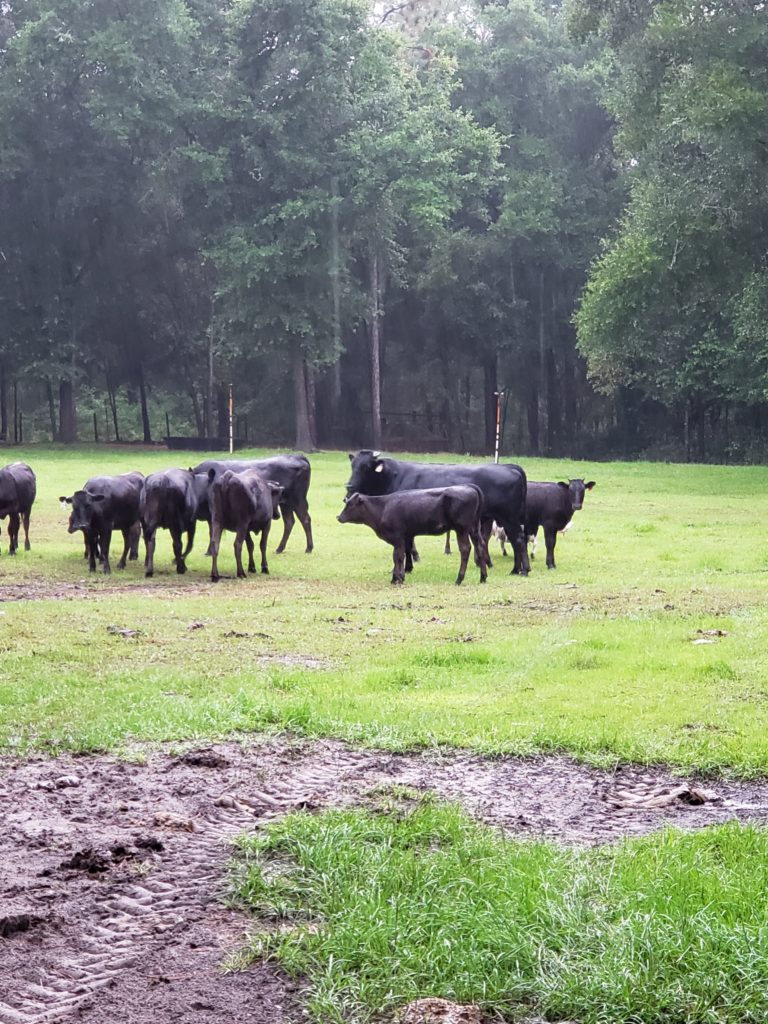
One other process he uses is feeding his livestock barley seeds or brewer’s grain which, when boiled, opens the husk, revealing a germ the cattle can then easily digest. It provides higher protein from 9-12 to 25-32% better for the herd, no high sugar or bloating as cattle graze all day long. The brewery can incur six-figure annual costs in managing volumes of waste. This way, you’re taking a byproduct that you were previously paying to get rid of and using it to produce something of value. Whitt sells this by-product to other farmers, ranchers and trades for hay. He states, “I don’t buy hay.” Distance is his advantage many don’t want to travel to the distiller so he does pickups for them, one man’s trash is another’s treasure, this is an economical barter for him.
His mother told him a story of this young girl whose mother was teaching her how to make ham. She got the ham and cut the two ends off and put it in the pan. The young girl asked, “Momma, why did you cut the two ends off?” Her mother answered, “That’s what my Momma did.” The grandmother was still alive, so she went to her and asked, “Grandma, when you cook a ham, do you cut the two ends off?” She said, “Yeah Baby.” She asked, “Why do you do it like that?” She said, “That’s how my Momma taught me how to do it.” Luckily, the Great Grandmother was still alive, so she went to her and said, “Granny, when you cook the ham, do you cut the two ends off?” She said, “I sho’ do, Baby!” She asked, “Why do you do that?” Great Grandmother stated, “The pan that I had was too small for the hams they sell in the store, so I had to cut the ends off for it to fit.”
Farmer Whitt shares, a lot of (explicit) the “good ole boys” are doing, is because “someone” has told them this is how it’s done. And they are not willing to entertain anything other than that. The process has been institutionalized, he was told you won’t be able to do this; you may get one or two cows on that “little bit” of land you got going on. His response was, “Oh well, we’ll see!” The Japanese don’t have much land and this is the how they do it. If they can do it, why can’t we do it here in America? Why can’t we incorporate some of these techniques? He studied both their ways and the university traditional ways, coming up with a unique formula that works at his farm.
Farmer Whitt has plainly stated, he is hard headed. He says, “We have been bred in many cases to be afraid of failing and concerned with what people will say or think of us.” Another example is he built his home, a 2-story, 3500 square foot residence. He poured the foundation and laid the blocks, did roofing all while his family and friends told him it couldn’t be done. He used his own funds to finance, a $400,000 valued home that cost him $85,000 to build. Now he has set an example for others who ask him, “Do you think I could remodel my home?” His answer is an encouraging, “Yes!”
He hopes to inspire others, including his daughter, to keep improving and multiply by passing on generational wealth. We struggle to bury our own while the smart thing to do is carry an insurance policy. Insurance money is tax free. Socialism, tax free, low interest rate, food stamps welfare, these subjects peppered the conversation. He divulged, “I’m not afraid to get my hands dirty. Don’t short change yourself! We limit ourselves many times. God has promised us prosperity, so challenge Him. Your response may be yes, no or you are not ready, but it comes in his time. Among us there is fear, lack of cooperation within the races, jealousy, and often a lack of understanding and not being open minded.”
Our legacy is rich in culture we were not naked savages as many books portrayed us to be. History books don’t and won’t tell the true story. Yes, some of it is dark with greed and betrayal, but the whole truth is liberating and can set a milestone for continued improvement among us as a nation. We must gain confidence in our own, the violence and destruction within and against our race must be stopped.
The Processing Begins
It’s a warm humid morning at the farm, 9:02 am a shot could be heard in the distance. The “processing” will begin. Butchery is an ancient trade which dates back to the domestication of livestock. Its practitioners formed an association that oversees the practice of their craft/trade in a particular area as far back as 1272. A butcher may put down the animal, dress its flesh, sell its meat, or participate within any combination of these three activities. These current times the laws offer trade certifications for this art. Some areas expect a three-year apprenticeship followed by the option of becoming a master butcher.
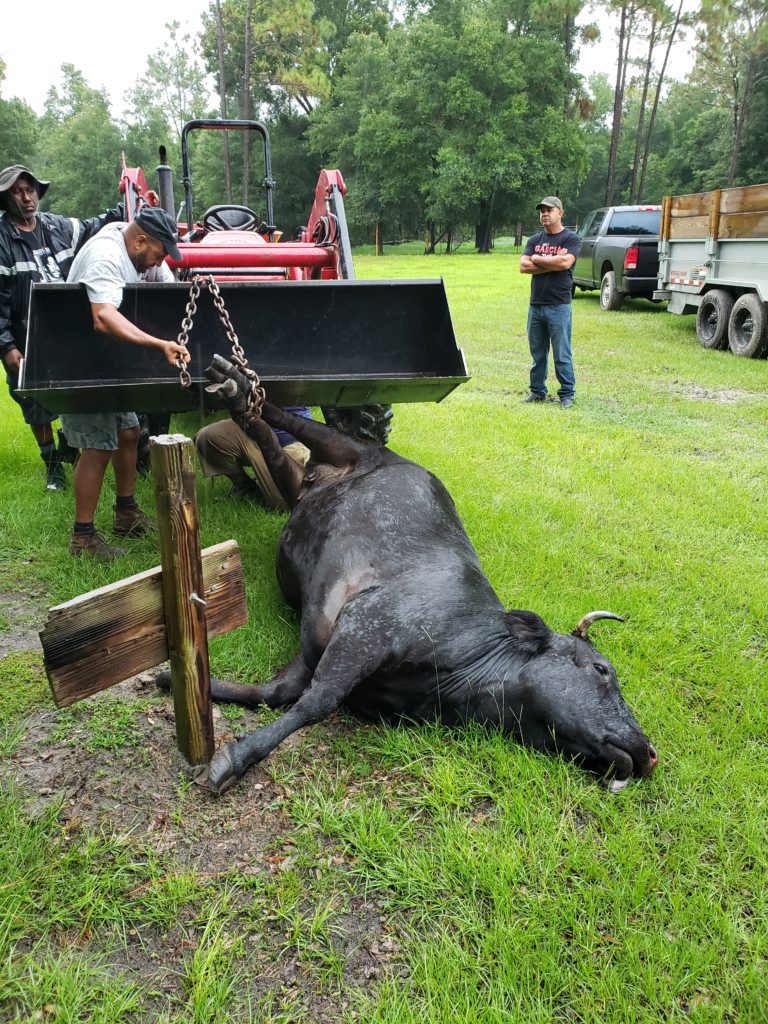
Butchery is a traditional line of work. Today a master of the craft will stun (incapacitate), facilitate blood removal, skin (removing the hide or pelt), eviscerate (the removal of internal organs, in the abdominal cavity) and split (divide the carcass in half longitudinally) them in quarters.
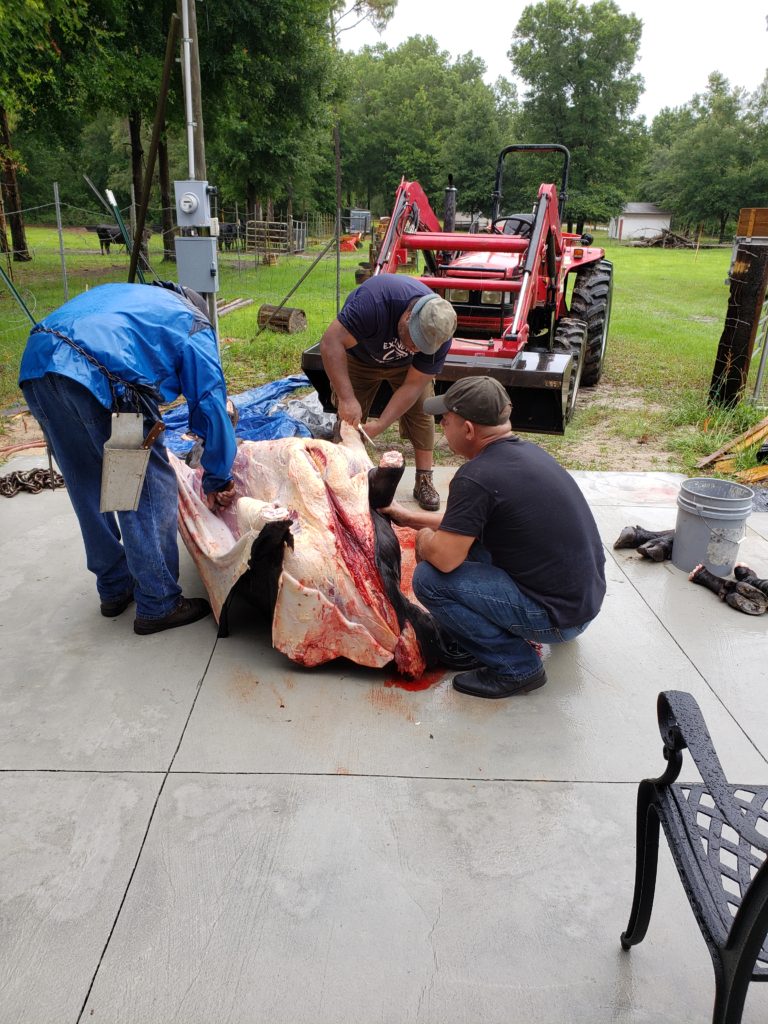
Primary butchery consists of producing primal cuts from each quarter with the minimum of wastage. Secondary butchery involves boning and trimming primal cuts in preparation for consumption or sale. Historically, primary and secondary butchery were performed in the same place. When refrigeration was less common, these skills were required.
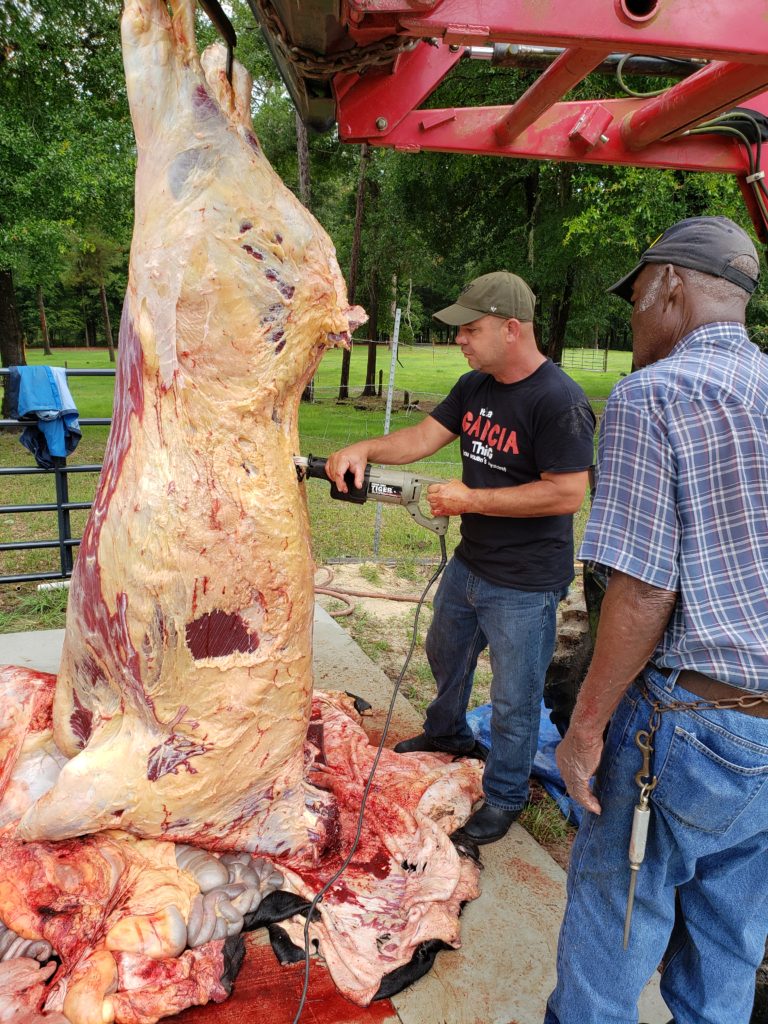
A primal cut definition varies among the American, French and British countries, one man’s trimmings could be another man’s primal cuts. In the United States the USDA use a beef grading system “prime” to “canner”. If you want the nitty-gritty (pun intended) of low-grade beef, there is some USDA reading material available. USDA prime is the superior grade because it has the highest degree of fat marbling featured at the most exclusive upscale steakhouse and restaurants around the country. “Only about 5% of meat grade out prime so if you are going to do something, do the best”, says Farmer Whitt.
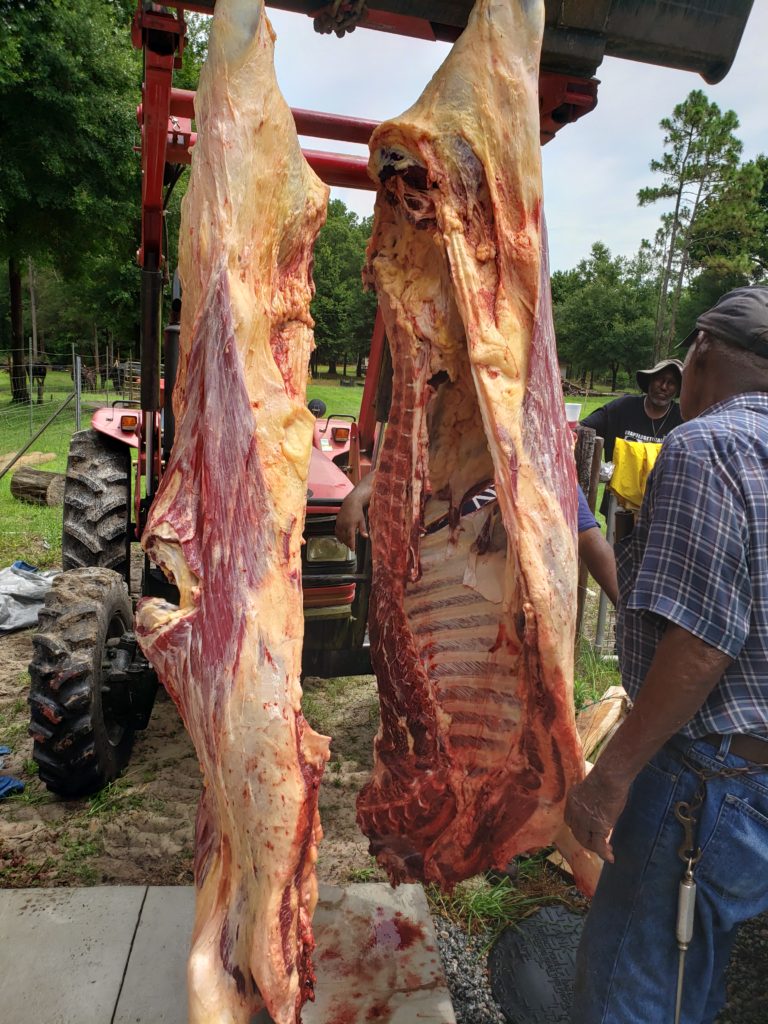
Farmer Whitt learned 90% of what he knows from Mr. L. C. Stevenson, Sr. one of his main mentors during his farming adventures. He stayed in his hip pocket, watching his every move, looking over his shoulders at every turn. Mr. L.C. is a war veteran, served as a US Combat engineer in the Korean War, a draftee of two (2) years 1951-1953, building bridges among the river divides of Russia and Europe. He spoke of the Battle of Pork Chop Hill, so-named because the topographic shape resembled a pork chop. Mr. L.C. said he enjoyed his service as a Staff Sergeant.
The audience for the processing of the seven (7) year old 1700 pounds Waygu female cow (until 1940 most cows are not marketed until they are four (4) or five (5) years old but most Wagyu are processed around 36 months) at the farm was infused with other former soldiers, Leslie Chappelle and Whitfield Jenkins, former NFL Denver Broncos player, now President of the Liberation Ocala African American Council, Inc. (“The Struggle Continues”), he also held office in the NAACP both Chappelle and Jenkins are Vietnam veterans. The village gathered with them, Harriet Peoples (nurse), Mark Prophet, Douglas Shirilla, Omar Garcia and Farmer Whitt’s best friend Robert Jones. There were plenty of war stories, joking back and forth some exaggeration of tall tells with the gentlemen sometimes forgetting they were in the presence of ladies. At one point the other cows were mourning the loss in the herd, Farmer Whitt bellowed out a “STFU”, they went silent. He said, “Make sure they know I’m a Christian, born again, redeemed, but not yet sanctified!” There was plenty of laughter and his Cousin Whitfield said, “That’s my June Bug,” which he affectionately called him throughout the day.
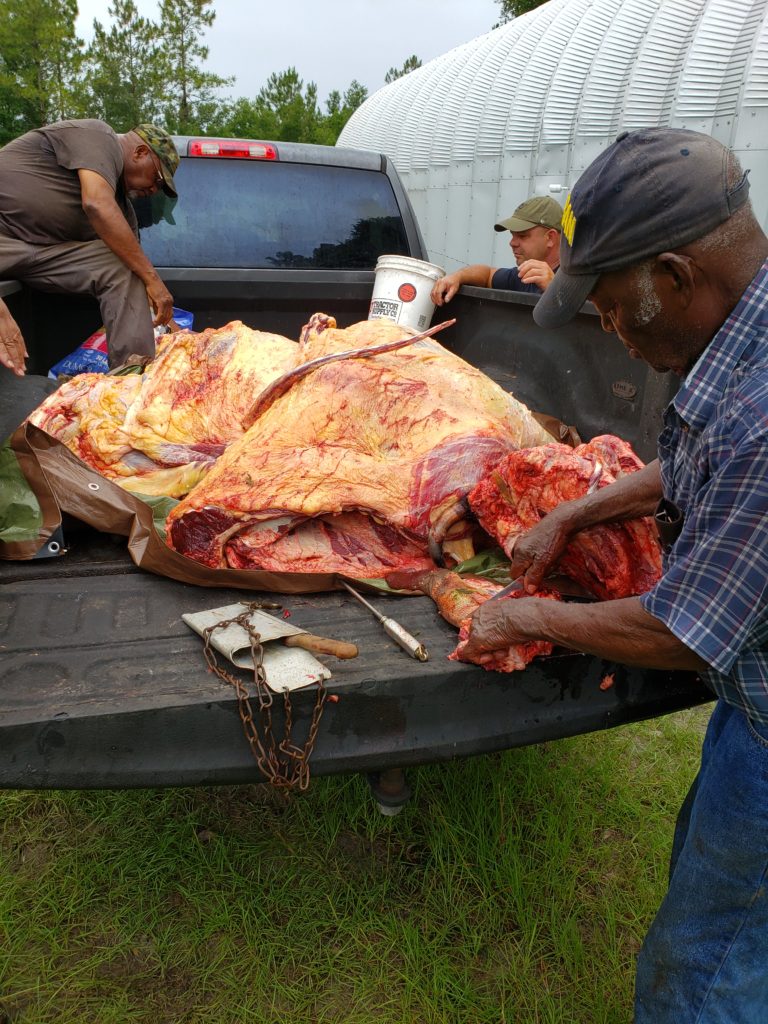
Farmer Whitt says young men are for war, elders are for counsel, yet some elders have not passed on the traditional foundations. That’s why he watches, listen and learns from the 88 year-old veteran, Mr. LC. Sometimes, he tries to give “lip service”, but Mr. LC is quick-witted and doesn’t hesitate to put the “young apprentice” in his place. Mr. LC says he is willing, able and eager to teach his trade to any and all that want to learn.
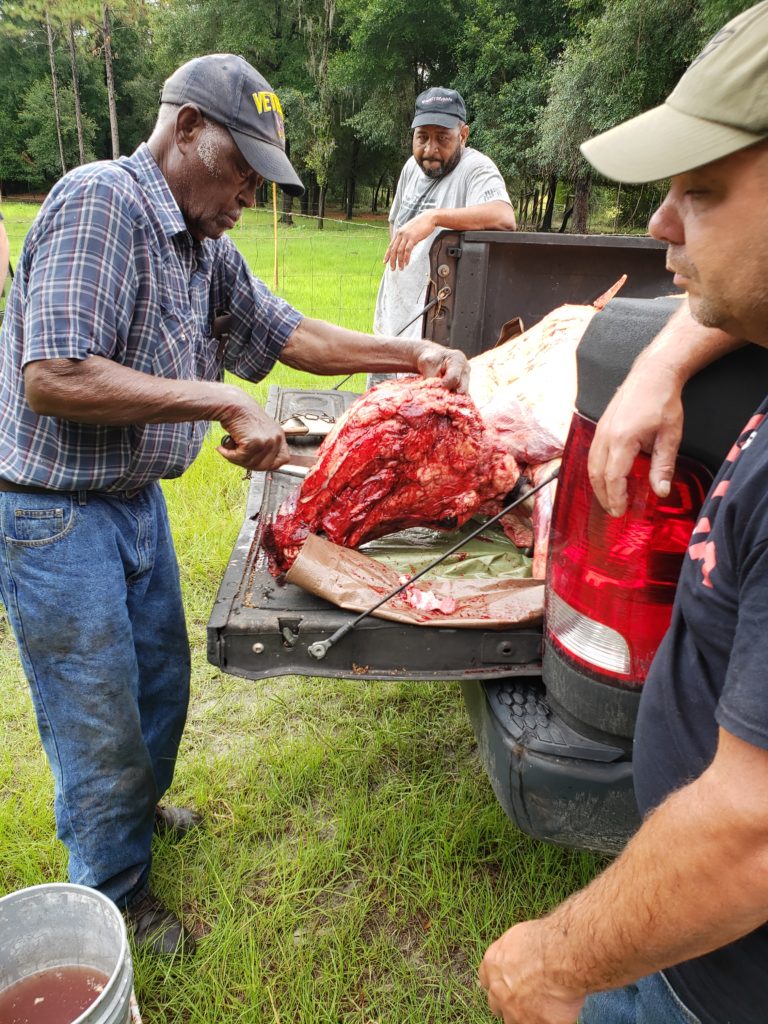
Everything was about timing and the whole process ended at 12:04pm–three (3) hours, precision and upmost safety for those around the very sharp instruments and making sure there was an avoidance of contamination. Hide, head, legs, udders, inners removal, presentation of yellow fat (indication of grass fed), white fat (corn fed), twitching of flesh—definitely not for the faint of heart. Not to mention the 3 ½ feet rattlesnake Farmer Whitt encountered while digging a hole for burial of the cow carcass. There was an offer to take it and use the skin for a cell phone case, no takers. “Not to be afraid, back in the day I would have eaten him. I guess I’m too much of a hillbilly.” The pictures tell more of the story.
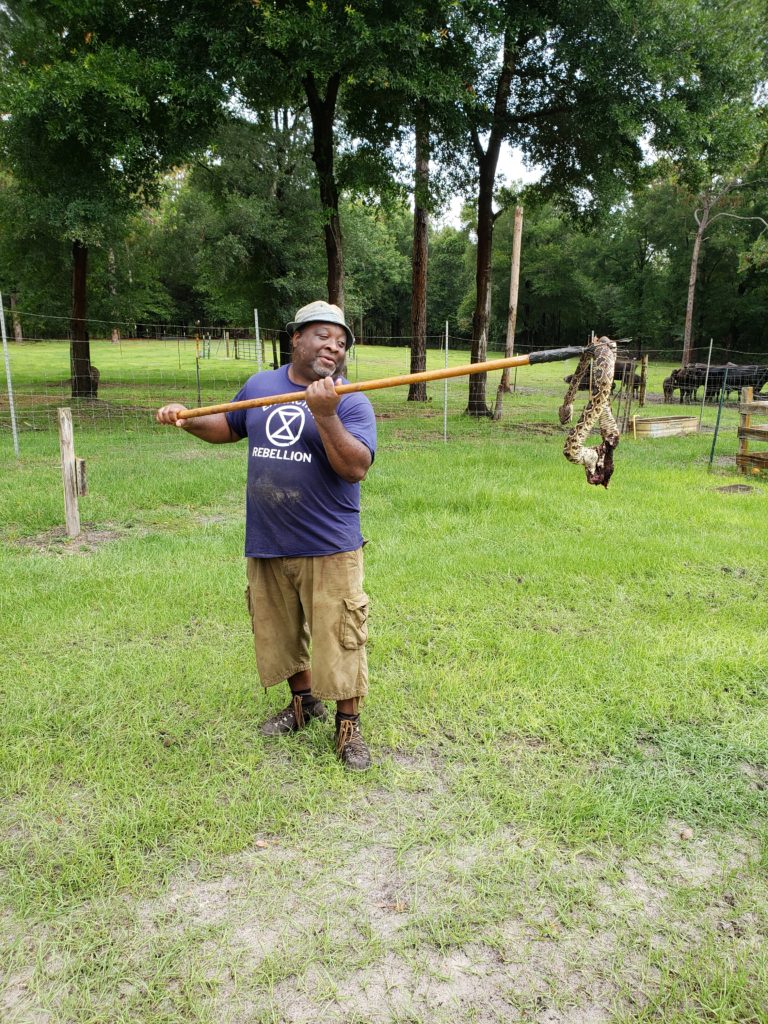
Lastly, Farmer Whitt’s main point is sustainability, getting the hands of Black people on top of the food source, to defy the so called “experts”. You don’t need lots of money or land, just color outside of the box, using techniques and technology. He still works his 9-5 job Monday through Friday and tends to the farm Saturday and Sundays, with no farm hands by precise planning and high security monitoring. Corporate agriculture is not the only option, they are all about poisoning and profits. We did it in the past and we can do it now. Do the Best!
The bull takes the cow
The bull takes the cow
Hi-ho, the derry-o…
The bull takes the cow
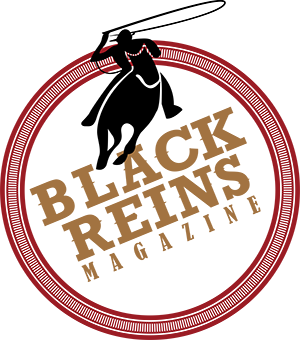

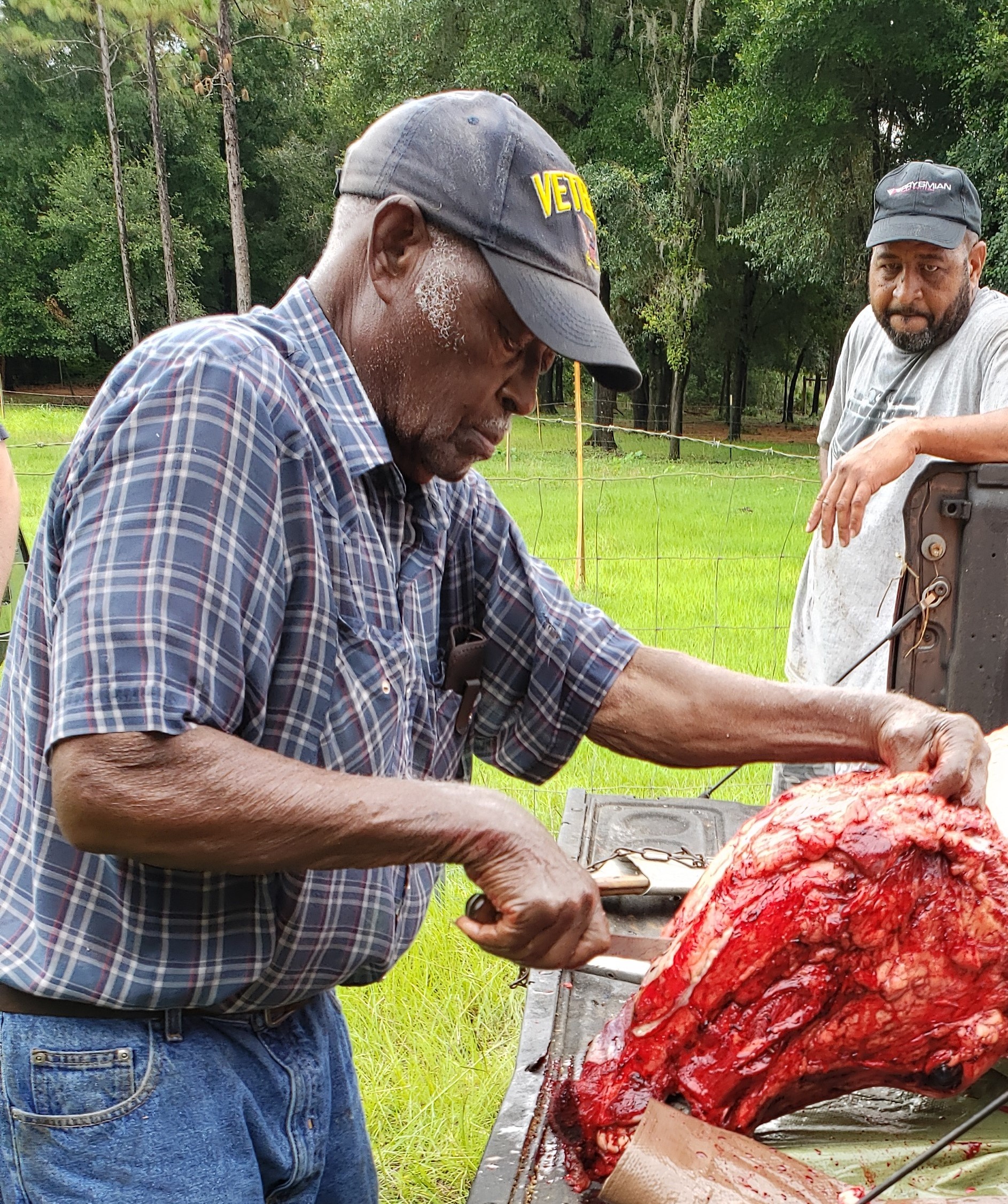
1 comment
I’m so glad I know about this publication I really like this lifestyle. I want to thank Mr B for informing me about this Black magazine.